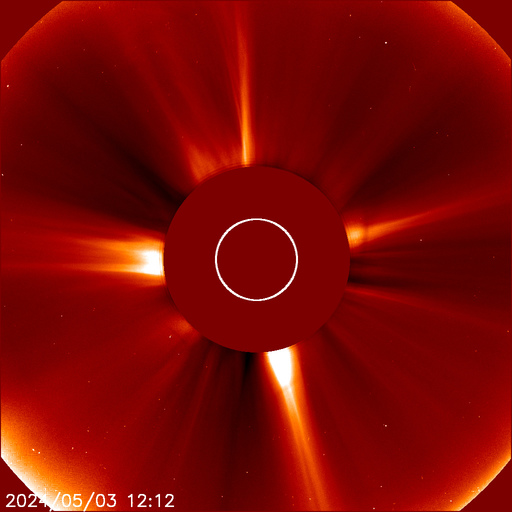Visable aurora july 14 2012 solar flare storm
If you’re far enough north, you might catch a glimpse of the magnificent
aurora borealis. The northern lights sky show will be more intense tonight because the sun released a large solar flare on Thursday and Friday, and it’s just starting to affect Earth on Saturday morning.
The Display: Shows the intensity and location of the aurora from the solar flare as expected for the time shown at the bottom of the map. This forecast is based on current solar wind conditions and the average time for the solar wind to propagate from the ACE satellite at L1 to Earth.
The model produces an estimate of the intensity of the aurora. In this product a linear relationship between intensity and viewing probability is assumed. This relationship was validated by comparison with data from the UVI instrument on the NASA POLAR Satellite .
The sunlit side of Earth is indicated by the lighter blue of the ocean. The
sub-solar point is also shown as a yellow dot but only if the sub-solar point is in the view of the choosen image. The day-night line or terminator is shown as a yellow line. Note that the aurora will not be visible during daylight hours and it may be an hour or more before sunrise or after sunset that the aurora can be seen from the ground.
____ The
red line about 1000 km equatorward of the aurora indicates how far away viewers on the ground might see the aurora assuming good viewing conditions.
This is a big solar flare, classified by astronomers as “extreme,” but according to
spaceweather.com, it’s barely into that extreme range. Just a few ticks less intense, and it would be ranked in the innocuous “M” (moderate) range.
Nevertheless, this latest solar flare still might be powerful enough for you to see those lovely
northern lights tonight, even from latitudes as far south as New York. Will anything else be affected? No, you don’t have to worry about electronics being destroyed, even if you own an Earth-orbiting satellite.
latest, latest solar, latest solar storm news, news, Solar, storm, storm news








